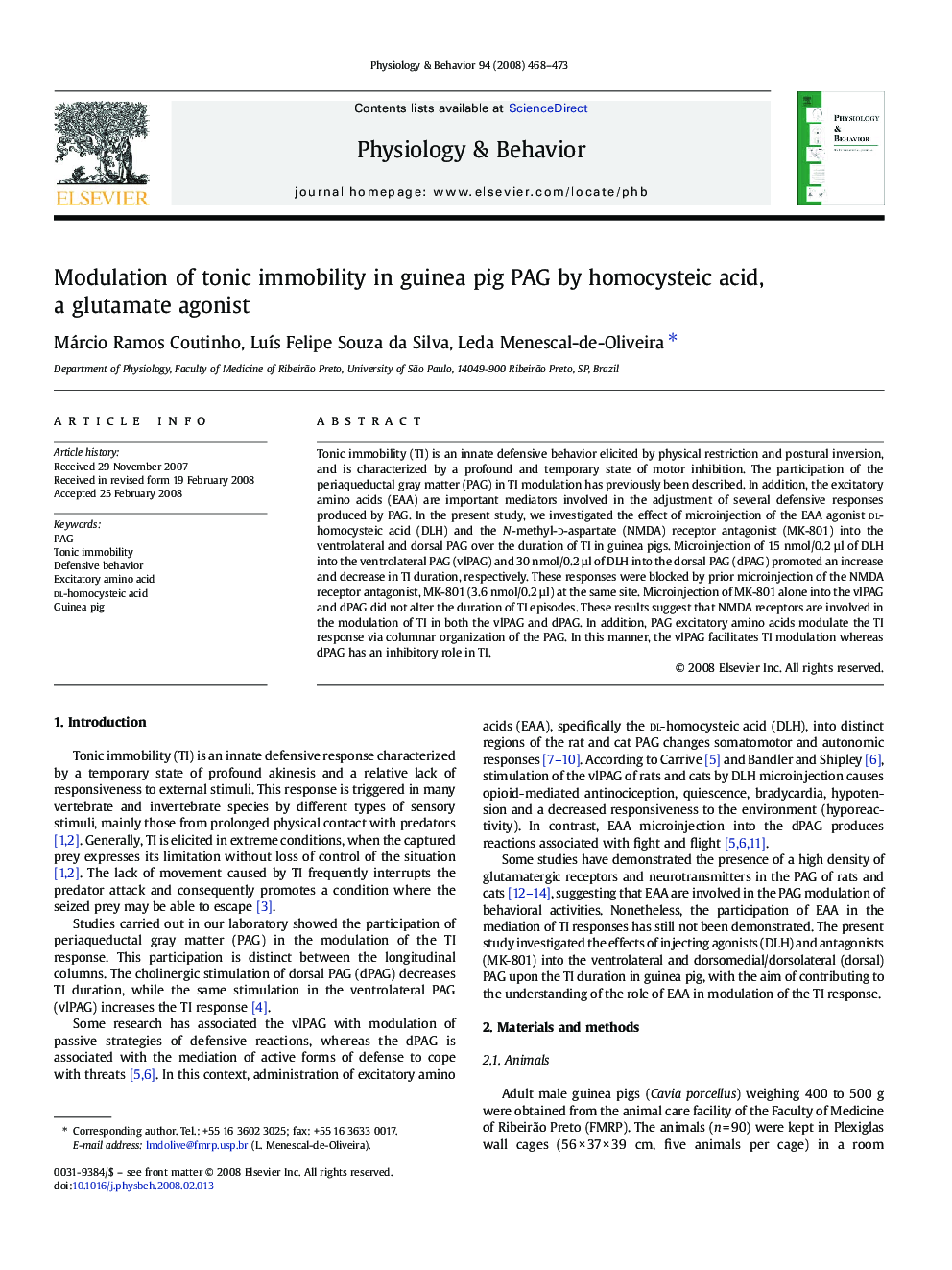| Article ID | Journal | Published Year | Pages | File Type |
|---|---|---|---|---|
| 2845427 | Physiology & Behavior | 2008 | 6 Pages |
Tonic immobility (TI) is an innate defensive behavior elicited by physical restriction and postural inversion, and is characterized by a profound and temporary state of motor inhibition. The participation of the periaqueductal gray matter (PAG) in TI modulation has previously been described. In addition, the excitatory amino acids (EAA) are important mediators involved in the adjustment of several defensive responses produced by PAG. In the present study, we investigated the effect of microinjection of the EAA agonist dl-homocysteic acid (DLH) and the N-methyl-d-aspartate (NMDA) receptor antagonist (MK-801) into the ventrolateral and dorsal PAG over the duration of TI in guinea pigs. Microinjection of 15 nmol/0.2 µl of DLH into the ventrolateral PAG (vlPAG) and 30 nmol/0.2 µl of DLH into the dorsal PAG (dPAG) promoted an increase and decrease in TI duration, respectively. These responses were blocked by prior microinjection of the NMDA receptor antagonist, MK-801 (3.6 nmol/0.2 µl) at the same site. Microinjection of MK-801 alone into the vlPAG and dPAG did not alter the duration of TI episodes. These results suggest that NMDA receptors are involved in the modulation of TI in both the vlPAG and dPAG. In addition, PAG excitatory amino acids modulate the TI response via columnar organization of the PAG. In this manner, the vlPAG facilitates TI modulation whereas dPAG has an inhibitory role in TI.
